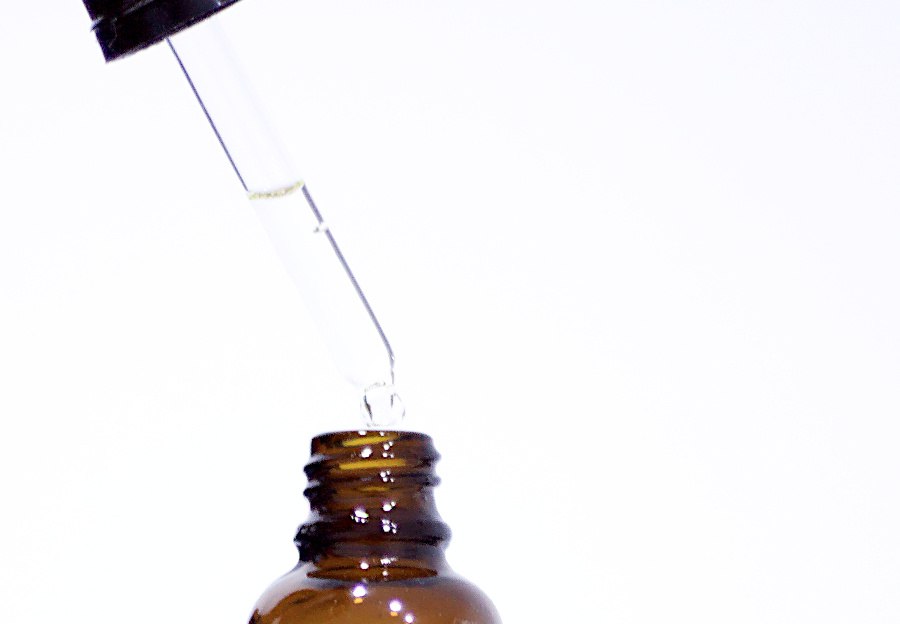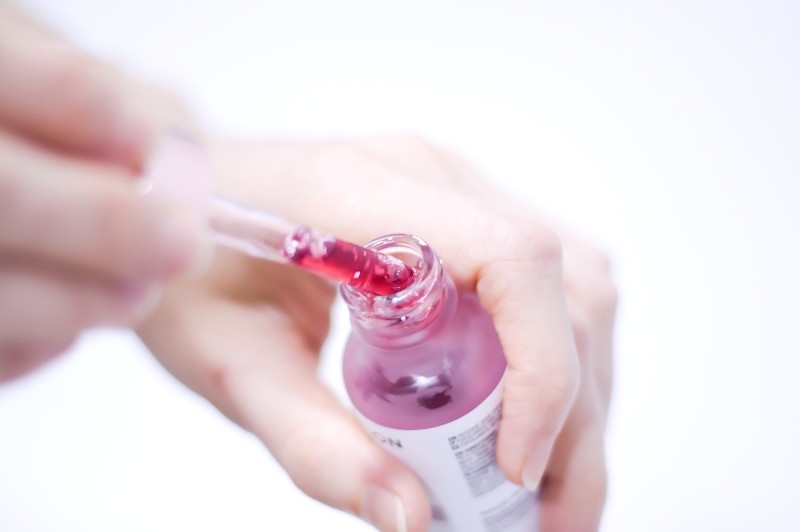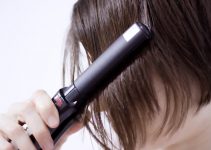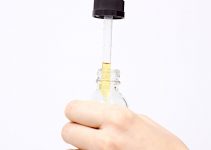
In this debate on glycolic acid vs salicylic acid you’re definitely going to learn everything there is to be known about these acids.
The things are quite clear when comparing the two. Once you know the basic things, you’ll be able to decide which would fit your needs better.
With that in mind,
I’m also going to recommend some of the best skincare products that contain either glycolic acid or salicylic acid or both. All those products are going to be affordable.
It’s common for some skincare products to contain both glycolic acid and salicylic acid and maybe even lactic acid and some enzymes.
But there are some products that just focus on one of the two ingredients. When that’s the case, the concentration is high and your skin will benefit from those high concentrations without a doubt.
Contents
Glycolic Acid vs Salicylic Acid: Common Things
- the first common thing is in their names: they’re both acids
- glycolic acid is an alpha-hydroxy acid (AHA)
- salicylic acid is a beta-hydroxy acid (BHA)
- taking it even further, they’re both chemical exfoliators
- the name chemical exfoliators doesn’t mean anything bad – in reality, chemical exfoliator are much more gentle than scrubs and they can benefit absolutely all skin types, including those with sensitive skin
- chemical exfoliators remove dead skin cells by penetrating deep into the skin and by breaking up the bonds that hold the dead skin cells together – that’s where they get their name from
How Chemical Exfoliators Benefit the Skin

- right after cleansing (face washing twice daily), exfoliation is one of the most important steps in skincare because it keeps pores from getting clogged
- if the pores are prevented from getting clogged, breakouts can happen to a lesser degree (blackheads, whiteheads, pustules)
- the main reason why we exfoliate is to keep the pores clean and prevent acne with over-the-counter products – from my own experience, it definitely works to a satisfying degree
- another important reason is to maintain a smooth skin – exfoliation is perfect for those with dry skin
- preventing fine lines and wrinkles is another area of concern where chemical exfoliation can do some outstanding work
- brightened up skin is another benefit that chemical exfoliators offer – who doesn’t want a refreshed smooth look?
- there are a few other additional benefits: even skin tone, better hydration, anti-inflammatory properties that can sooth irritated skin, allowing other skincare products (serums, moisturizers) to penetrate deeper into the skin
Glycolic Acid vs Salicylic Acid: Main Differences
You’ve see what they have in common. They’re both chemical exfoliators that can do some wonderful things for our skin problems and concerns.
I provided you with a bigger picture of how regular exfoliation can benefit the skin.
Now,
It’s time to see which acid is best for what. That’s where the differences in our glycolic acid vs salicylic acid debate can actually be found.
Glycolic Acid Skin Benefits
Glycolic acid is the most powerful AHA because it has the smallest molecule of all. It is derived from sugarcane, it’s naturally occurring.
Other famous AHAs include lactic acid and mandelic acid. They’re all water soluble.
The one that we’re focused on in this article penetrates deeply into the skin, which makes it very effective. It’s more effective than lactic acid.
But it’s still pretty gentle on the skin so everyone can use it.
It also helps that some products offer different concentrations: you can start off with 10% glycolic acid and apply it 2-3 times a week during the evening.
Then you can increase the concentration if you feel that your skin handles it with obvious benefits.
The most important glycolic acid skin benefits are derived from the fact that AHAs increase cell turnover rate.
That means that you can get a brighter skin tone, more even complexion, a boost in collage and elastin production to prevent fine lines and wrinkles, and a quicker cell turnover rate also means fewer clogged pores.
Dead skin cells are removed and the skin is allowed to feel and look better.
Very high concentrations of AHAs can lead to sun sensitivity, itchiness, and peeling. That’s why you have to get your skin gradually used to them.
Salicylic Acid Skin Benefits
Salicylic acid is a BHA and is definitely different from glycolic acid. Thus, this glycolic acid vs salicylic acid debate.
As a BHA, it’s oil-soluble.
That means that it penetrates deeply into the skin and unclogs the pores by removing dead skin cells and excess oil.
The fact that it also removes excess oil and it can help regulate sebum production is what makes it an absolutely loved ingredient when it comes to dealing with acne.
That’s where the main difference lies in: salicylic acid is sought after by those dealing with breakouts.
Since my acne intensified I have concentrated a big part of my efforts into finding amazing products with salicylic acid and, after about half a year, I really have my acne under control.
I definitely must mention that I modified my diet to exclude sweets, sodas, milk (I still eat yogurt and some cheese), and I geared it towards fruits and vegetables. I also increased my exercise routine.
Those with mild breakouts should definitely try salicylic acid products. And even glycolic acid because it can also help with clogged pores.
Even those with moderate acne can benefit from it but the breakouts won’t be completely gone just from using this particular ingredient. A dermatologist will advise you better.
Best Skincare Products with Glycolic Acid & Salicylic Acid
I’ve talked about what are the differences and the common aspects when it comes to glycolic acid vs salicylic acid but let’s actually review some products that are focused on the two.
I think that’s an easier way to understand what these two ingredients can do for the skin and what you should be looking for.
1. Glycolix Elite Glycolic Acid Treatment Pads, 60 count
These are some of the best pads with glycolic acid. They’re also one of the cheapest best skincare products with glycolic acid.
You can actually choose from 3 concentrations: 10%, 15% and 20%. If you’re already used to chemical exfoliation, you can go with the highest concentration.
The 60 pads will last a considerable amount of time. If you want them to last longer, use them 2-3 times a week. If you don’t care about that, use them every evening.
The Glycolix Elite Glycolic Acid Treatment Pads are incredibly popular.
They’re praised for quite a lot of benefits:
- cleaning out clogged pores
- slowing down the intensity and number of breakouts
- evening out skin tone
- brightening up the complexion
- and reducing the appearance of fine lines and wrinkles
In order to achieve all that, glycolic acid is aided by a number of very powerful ingredients: witch hazel, retinyl palmitate (a retinoid weaker than retinol), vitamin E, ascorbyl palmitate (vitamin C derivative), and Co-Q10.
In the evening, after cleansing and after applying a toner, run a pad over your face until it’s dry. Continue with the rest of your routine.
2. Paula’s Choice 2% BHA Liquid Exfoliant, 4 oz
Another very impressive product when it comes to chemical exfoliation is this Paula’s Choice 2% BHA.
It’s also another affordable skincare product.
This exfoliant with a very high concentration of salicylic acid targets mainly breakouts.
It will fight large pores, clogged pores, excess sebum production, blackheads, redness. The unexpected benefit is that it can reduce fine lines & wrinkles.
Without a doubt, it’s an impressive skincare product for fighting breakouts, preventing their future apparition, and much more.
Paula’s Choice 2% BHA Liquid Exfoliant is simple yet effective: besides 2% salicylic acid is also contains green tea extract.
It’s no wonder that it’s one of the most popular chemical exfoliators.
It can also be used as a best toner for acne. It serves a lot of roles.
All skin care types can benefit from it.
Apply it in the evening, it can be used every night, leave it on until morning, absolutely don’t wash it off.
3. Pixi Glow Tonic, 8 oz
If you’re still not sure about how your skin will react to powerful ingredients like glycolic acid then, in this glycolic acid vs salicylic acid debate I will offer you a simple affordable solution.
Get a facial toner like Pixi Glow Tonic.
It has a very nice concentration of 5% glycolic acid. That’s really impressive and I love that the price, considering the 8 oz quantity, is pretty affordable for a lot of people.
The other ingredients are aloe vera gel for soothing the skin and red ginseng for energizing it.
This toner will brighten the skin, hydrate it a bit, will remove dead skin cells, and it will keep pores from getting clogged.
It works for all skin types. I pretty much love it.
4. Pacifica Acne Warrior Clearing Astringent, 8 oz
One of the cheapest products with 2% salicylic acid is this Pacifica Acne Warrior Clearing Astringent. The 8 oz quantity is absolutely more than enough for a few good months.
It’s an astringent. That means a few things.
It can be used right after cleansing instead of a toner. But it can also dry out the skin so you need to moisturize the skin in order to maintain a healthy skin barrier because it contains alcohol.
I wouldn’t recommend it for the sensitive skin type.
There is an addition of helpful ingredients: witch hazel, niacinamide (good for making pores look smaller), cucumber extract, and aloe vera.
How to Use Chemical Exfoliators like Glycolic Acid & Salicylic Acid
Unlike scrubs, chemical exfoliators are usually left on the skin until morning. Most of them are just used at night because they can cause sun sensitivity.
Unless the product mentions that it should be cleansed off after 10-15 minutes, then a product that contains glycolic acid, salicylic acid, lactic acid, enzymes etc. is left on the skin to do its magic until morning.
There are just a few things that you need to do, it’s a very simple skincare routine even if you incorporate a chemical exfoliator into it:
- cleanse the skin
- apply a facial toner if you’re using one
- then apply the chemical exfoliator that usually comes in the form of a pad or a serum
- after that, you can continue with the rest of your routine
My only advice is: don’t use a product that contains a high concentration of these two ingredients during the same night that you’re using a retinol product, especially one with a strong concentration of retinol.
It can irritate the skin, can lead to pealing, since retinol also acts like a sort of exfoliant even though it’s actually an antioxidant.
Salicylic acid and retinol can actually do great things together but only if you have been using retinol products for a while and the skin is already comfortable with it.
And I think that’s about everything you need to know when it comes to glycolic acid vs salicylic acid.







